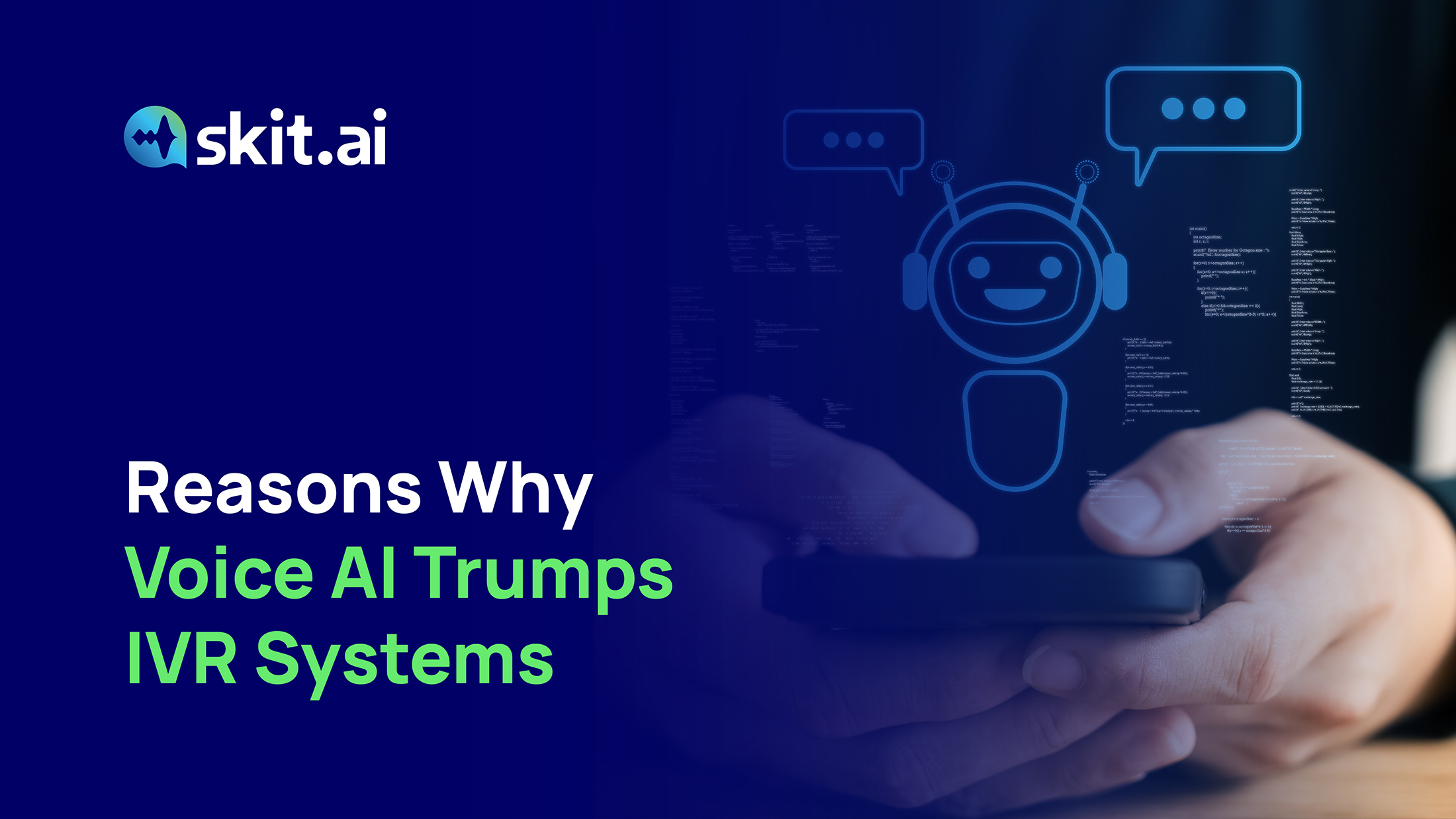The Evolution of Customer Conversations
During the 1960s to 1980s, customer interactions underwent a major shift with the emergence of call centers and Interactive Voice Response (IVR) systems. Businesses began centralizing their customer service operations, and the introduction of toll-free numbers made it easier and more affordable for customers to reach companies, marking a pivotal moment in scaling customer support.
By the 1980s, IVR technology allowed customers to interact with automated voice menus using their phone keypad. This innovation enabled round-the-clock access to services like checking account balances or order status without needing a live agent.
While this was a major breakthrough at the time, over the years, IVR systems began to lose their appeal. Though designed for operational efficiency, they often led to rigid menu paths, long wait times, and a lack of personalization. Customers frequently found themselves repeating information after navigating complex options, making the experience feel impersonal and frustrating.
Why IVR Systems Have Hit Their Retirement

Outbound IVR systems were initially introduced to automate large volumes of outbound calls for purposes like collecting feedback, sending promotional messages, delivering appointment reminders, and broadcasting announcements. These systems were built for efficiency and scale and typically consist of three main components:
- An auto-dialer to place calls automatically to thousands of contacts
- A text-to-speech engine or pre-recorded audio to convey the message
- A DTMF (Dual-tone multi-frequency) input system, allowing recipients to respond using their phone keypad
While this setup was effective in its time, it has grown increasingly inadequate in today’s customer-first era, where expectations for personalization and real-time responsiveness are much higher. The limitations of outbound IVRs are now hard to ignore:
- Unidirectional Communication: These systems are designed for one-way messaging, offering minimal room for interaction beyond pressing a few buttons. This restricts meaningful engagement and often leaves customers feeling unheard.
- Low Engagement Rates: Customers typically perceive outbound IVR calls as impersonal, generic, and sometimes intrusive. As a result, drop-off rates are high, and the overall effectiveness of campaigns is limited.
- No Real-time Understanding: IVRs lack the ability to process natural language or understand context. They can’t capture or analyze what a customer is actually feeling or saying, making them ineffective for gathering deep insights.
- Lack of Contextual Flow: These systems cannot adapt dynamically based on the customer’s responses or history. The interaction remains static, robotic, and disconnected from the customer’s actual needs.
- Negative Customer Experiences: Frustration with outdated IVRs is common. In fact, research shows that a poor IVR experience can damage customer perception and discourage future engagement with the brand.
GenAI-powered Voice Agents Taking Center Stage
The evolution of Conversational AI and Generative AI (GenAI) has ushered in a new era of customer engagement—one defined by intelligent, human-like voice interactions at scale. At the forefront of this shift are GenAI-powered voice agents, which are transforming how businesses connect with their customers.
Unlike traditional IVR systems that depend on rigid scripts and keypad inputs, GenAI-powered voice agents can carry out natural, free-flowing conversations in real-time. Here’s how they’re redefining the customer experience:
- Understanding Natural Language: GenAI voice agents can comprehend customer queries in everyday language, enabling more fluid and intuitive conversations—no need to stick to pre-set commands or struggle with limited options.
- Delivering Personalized Interactions: These agents are context-aware and dynamic. They adjust responses based on user history, intent, and preferences, making each interaction feel tailored and relevant.
- Capturing Intent and Sentiment: With advanced NLP and sentiment analysis, voice agents not only understand what the customer is saying but also how they’re feeling. This allows businesses to gather actionable insights and continuously improve the quality of interactions.
- Minimizing Customer Effort: No more navigating complex IVR trees. Customers can simply speak naturally, express their needs, and get instant, intelligent support—improving satisfaction and reducing friction.
GenAI-powered voice agents represent a significant leap toward truly conversational, empathetic, and efficient customer support—all while improving operational efficiency and driving long-term loyalty.
Soaring New Heights in Collections
In the world of debt collections and payment reminders, the ability to connect with customers effectively—and empathetically—is critical. Traditional outreach methods like outbound IVR, SMS blasts, or manual calls often fall short, leading to low engagement and high operational costs. Enter GenAI-powered voice agents, transforming the way businesses approach collections with intelligent, personalized, and scalable outreach.
These GenAI-driven voice agents are enabling organizations to take their collections strategy to new heights by:
- Driving Natural Conversations: Instead of robotic scripts, voice agents engage debtors in natural, human-like conversations. Customers can speak freely, ask questions, or express concerns—making interactions more approachable and less intrusive.
- Boosting Engagement Through Personalization: Voice agents dynamically tailor conversations based on customer profiles, payment history, and behavior, offering reminders or resolutions in a tone and manner that resonates with the individual.
- Understanding Intent and Sentiment: By analyzing real-time intent and emotion, AI can detect willingness to pay, hesitation, or distress—allowing for more sensitive handling of vulnerable customers and prioritization of high-intent leads.
- Improving Reach and Efficiency: Operating at scale, these agents can place thousands of calls simultaneously, follow up intelligently, and free up human agents to handle only high-complexity or escalated cases.
- Reducing Friction in the Payment Journey: Customers can immediately confirm a payment, ask for due date extensions, or request support—simply by talking to the voice agent. No waiting, no IVR menus, no frustration.
With GenAI voice agents, collections outreach is no longer about chasing payments—it’s about creating smarter, more respectful, and more effective conversations that drive results and strengthen customer relationships.
The Future of Customer Conversations
Businesses that continue to rely on outdated IVR systems risk falling behind in customer engagement. The future belongs to GenAI-powered voice agents that can:
- Deliver seamless, natural, and engaging conversations.
- Improve operational efficiency by automating repetitive tasks.
- Enhance customer satisfaction through personalized and intelligent interactions.
Customer communication is at the heart of every successful business. The transition from traditional IVRs to GenAI-powered voice agents is no longer an option—it’s a necessity. Companies that embrace this transformation will not only improve customer engagement but also gain a competitive edge in an increasingly digital-first world.
Are you ready to take the next step toward call automation with Conversational AI? Schedule a free demo with one of our experts to learn more!












